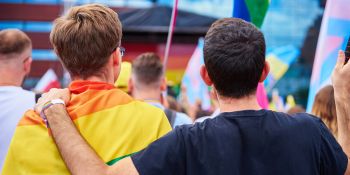This post was written by high school students from the Summer Research Boot Camp in the labs of Andrew Fuligni and Sandra Graham at UCLA, supported by UCLA Center for the Developing Adolescent, and led by Jenna Felkey, Piper Harris, Naomi Kline, and Xochitl Arlene Smola.
Authors: Kyan Nicholas Bernard, Asha Camile Kent, Tara McKillop, Kaelyn Cristel Morales, and Moises Salazar
The UCLA Adolescent Development Summer Boot Camp had a warm, welcoming return to in-person meetings this 2022, after experiencing a long isolated pandemic where there was little to no human interaction for high schoolers and college professors alike.
Going into week 2 of the boot camp, we discussed friendships and diversity, in which we explored the concepts more by conducting our own research questions. Firstly, before researching the concept, we needed to establish what “friendship” actually is, which was described to us as a dyadic (involving two individuals), voluntary, egalitarian bond. Depending on the strength of the bond, the friendship can be anywhere from a simple acquaintance to a close best friend.
Following this, we discussed how friendships related to adolescent development, satisfying our important needs for companionship, intimacy, emotional support, validation, and security. We concluded that as teenagers, we rely a lot on friends. Because of this importance, in almost every adolescent friendship research finding we studied, youth with friends were better off than the friendless in the categories of self-worth, mental and physical health, loneliness, school achievement, and risk for victimization.
Next, we discovered how these bonds can be formed, through principles such as homophily (the idea that individuals are likely to choose friends similar to themselves) and propinquity (the idea that individuals are also more likely to choose friends who are readily available to them). Because these two factors require in-person interaction, when discussing how our friendships changed throughout COVID-19, we saw how the pandemic really changed our way of making and maintaining friendships, with most of us stating how friendships tended to drift away.
Factors such as propinquity led to a discussion on how diversity in our school landscape affected our adolescent development. Looking at several research studies, we found that increased ethnic diversity in adolescent friendships can lead to benefits such as increased empathy and understanding of others. This is due to different ethnic groups usually bringing in people whose experiences differed from one another.
Seeing these benefits, we then began to research school diversity and saw the different factors that affected the statistic. By using the Simpson Diversity Index, we saw how the size of ethnic groups at school made a big difference. Even when there are one or two large ethnic majority groups within a school, as long as there are a number of different ethnic groups in numbers that equal or exceed the number of students in the ethnic majority groups, the school can be thought to have an average level of diversity.
Even if a school is diverse, a problem seen in many schools is how students from different ethnicities may encounter obstacles when trying to naturally interact, such as through specific higher education classes lacking diverse representation or cliques of the same ethnicities being formed. To properly reap the benefits of a diverse school, the school itself needs to find ways for interaction to occur between ethnically different students. Whether that be through ensuring staff don’t have a bias towards one race in their class, or by promoting clubs and classes that give equal opportunity for all students. Schools should continue to focus on the diversity of their campus as a way to ensure that students meet others from different backgrounds and views on life.



